8 Applications of roller bearings
Learn about the eight common applications of roller bearings, and also discover the five types of roller bearings.
This article will help you understand better how roller bearings work in various applications in the industry.
Roller bearings are the unsung hero of the engineering world.
You might not see them, but you'd feel their absence! From the automotive industry to agricultural machines and bicycles to robotics, these versatile components play an integral role in many applications.
So don't be shy to give them a round of applause and welcome them out of the shadows!
The Eight common applications of roller bearings are:
-
Automotive
-
Agriculture
-
Aerospace
-
Manufacturing
-
Industrial machinery
-
Medical
-
Marine
-
Power generation
In the next section, we introduce roller bearings, their importance, and their uses in various applications.
We also identify the five types of roller bearings to help you understand which of these types will be beneficial to your needs.
Overview of roller bearings and their importance in various applications
Roller bearings are a vital component in many applications.
They are composed of rolling elements, which separate the inner and outer races or rings that house them, allowing for relative motion between shafts and other components.
Roller bearings offer advantages over traditional bearing designs such as lower friction, improved load capacity, reduced noise, and vibration levels, quieter operation at high speeds, and extended service life.
Due to their superior performance characteristics, roller bearings are widely used in automotive transmissions and wheel hubs,
conveyor systems in industrial production lines, electric motors for appliances such as washers and dryers, spindles used in machine tools like drills or saws,
aircraft engines, pumps for water distribution networks or agricultural irrigation systems, roller coasters at amusement parks, and even in oil drilling rigs.
Roller bearings can also be used for difficult applications due to their excellent mechanical properties such as high load-carrying capacity and good impact resistance.
Additionally, roller bearings are available in a wide range of sizes and designs, allowing them to be adapted to meet specific application requirements.
Five types of roller bearings
Cylindrical roller bearings
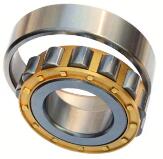
Cylindrical roller bearings are a type of rolling-element bearing that uses cylinders as the rolling element.
They can carry high radial loads and some axial loads in either direction, due to the line contact between the rollers and inner and outer rings.
The inner ring can be fixed or floating. Cylindrical roller bearings have a higher load-carrying capacity than other types of roller bearings due to a large number of rollers, which allows them to spread pressure evenly across a wide surface area.
The design also makes them suitable for applications with high speed and shock-loading conditions, such as automotive transmissions and industrial machines.
Additionally, they require very little maintenance and can operate in most environments without any issues.
Cylindrical roller bearings are commonly used in heavy-duty applications and industries such as automotive, aerospace, and industrial equipment.
-
Tapered roller bearings
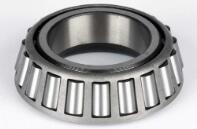
Tapered roller bearings are a type of rolling-element bearing that uses conical rollers to maintain the separation between the moving parts of the bearing.
The rollers are typically made of hardened and ground cone-shaped steel, but other materials may also be used. Tapered roller bearings provide higher performance than cylindrical roller bearings in certain applications due to their improved geometry and design;
namely, they can accommodate misalignment loads better and have a greater ability to handle radial and thrust loading forces.
Additionally, tapered roller bearings maintain an optimized contact angle throughout operation for reduced friction, heat buildup, and wear. This makes them well-suited for use in high-speed and heavy-load applications.
They are commonly employed in automotive axles, gearboxes, and conveyor systems.
In heavy machinery, tapered roller bearings are used to support a rotating shaft or axle.
-
Spherical roller bearings
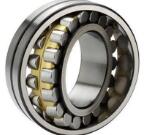
Spherical roller bearings are composed of two rows of symmetrical spherical rollers and cage components.
They have a self-aligning feature that allows the bearing to rotate or swivel in the housing to align with shaft misalignments, making them ideal for use in various applications such as conveyor belts, pulleys, and wheel axles.
These bearings offer high-speed performance, excellent tolerance to misalignment, low noise and vibration levels, extended life span, superior load capacity, and resistance to wear.
Additionally, these bearings are designed with an advanced sealing system that helps protect against contamination and corrosion while providing reliable lubrication.
This makes them suitable for use in harsh environments.
The combination of these features makes Spherical roller bearings an ideal choice for many industrial applications.
-
Needle roller bearings
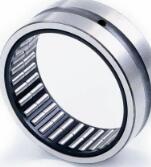
Needle roller bearings are highly compact bearing solutions, consisting of cylindrical rollers that are thin and long to their diameter.
The reduced cross-section of the roller allows these bearings to be used in applications with tight radial space requirements.
Needle roller bearings provide a high load-carrying capacity within a small housing envelope, making them ideal for use in transmission systems and automotive components.
They offer low friction performance, excellent accuracy, speed capability, and easier installation compared to other types of bearings, and are also suitable for oscillating movements.
Furthermore, needle roller bearings require less maintenance than other types of rolling element bearings due to their higher tolerance for contamination.
As such, they can be found in many industries including automotive manufacturing, agriculture machinery production, and general industrial applications.
-
Specialty roller bearings
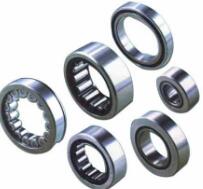
Specialty roller bearings are highly specialized and custom manufactured to meet specific requirements.
They provide maximum performance and reliability under extreme conditions, such as high temperatures, heavy loads, shock loads, contaminated environments, and corrosive atmospheres.
These features make specialty roller bearings ideal for many industrial applications that require precise operation with minimal maintenance.
Additionally, they can be made from a wide variety of materials to meet the needs of any application.
With their superior design and quality construction, specialty roller bearings offer a longer lifespan than traditional bearing designs.
Furthermore, they are designed to withstand higher vibration levels while still providing accurate positioning and exceptional durability over time.
For these reasons and more, specialty roller bearings are an invaluable tool in many industries today.
Eight common applications of roller bearings
-
Automotive

Roller bearings are an important component in the automotive industry.
They enable smooth and efficient motion in vehicle transmission systems, engine parts, and more.
The application of roller bearings is essential for reducing friction and providing the ultimate driving experience.
Roller bearings have superior load-carrying capacity, high-speed capabilities, and excellent axial misalignment capability when compared to other bearing types.
This makes them perfect for use in a wide variety of automotive applications such as transmissions, steering columns, wheels, engine components, and much more.
Moreover, roller bearings can be customized to meet specific requirements which makes them universally applicable in most vehicles today.
Due to their incredible performance advantages over conventional ball bearings, roller bearings are becoming increasingly popular in modern vehicles due to their superior load-bearing capacity, higher speed capabilities, and excellent axial misalignment tolerance.
-
Agriculture

Roller bearings are widely used in the agricultural industry for their high load-carrying capacity and low frictional losses.
They are used in applications such as tillage equipment, harvesters, tractors, and other heavy machinery.
Roller bearings are essential components of these machines, providing reliable support and smooth operation of various moving parts.
They have an advantage over traditional ball-bearing systems since they can handle larger loads more effectively without generating excessive heat or drag due to friction caused by rolling elements.
In addition, roller bearings require less maintenance than ball bearings and offer greater durability when exposed to extreme temperatures and environments.
This makes them ideal for agricultural applications that often operate in harsh conditions.
Furthermore, roller bearings with dust seals provide additional protection against moisture and corrosive materials.
With their additional advantages and long-term reliability, roller bearings are the preferred choice for agricultural applications.
-
Aerospace
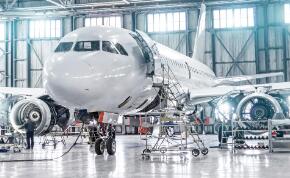
Roller bearings are also widely used in aerospace applications, particularly for aircraft engines, landing gears, and other components that require high levels of reliability and durability.
These bearings are designed to withstand extreme operating conditions such as those found in the aerospace industry.
They can withstand vibrations and shock loads, as well as temperatures ranging from -184F (-120C) to 392F (200C).
In addition to offering superior performance for challenging environments, roller bearings provide several design advantages.
Their low-friction operation helps reduce wear on moving parts, which is essential when safety is paramount.
The compact size also allows them to be integrated into designs with limited space.
Furthermore, they require little or no maintenance because they have sealing systems that protect against dust, dirt, and other contaminants.
-
Manufacturing
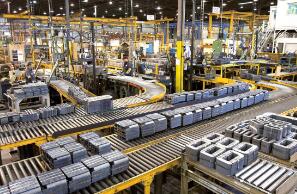
Roller bearings in manufacturing are also used to improve machine accuracy and efficiency.
The use of roller bearings can reduce the amount of energy required to produce a certain product while increasing its precision and accuracy.
By reducing friction between moving parts, roller bearings can help extend the life expectancy of machinery, increase reliability and reduce downtime.
Furthermore, the smooth operation of roller bearings reduces noise and vibration levels, resulting in a quieter work environment for personnel.
This makes them ideal for use in industries such as automotive or aerospace engineering, where a consistent level of noise/vibration is critical.
Overall, the application of roller bearings in manufacturing has numerous benefits that make them an essential component for any industrial process.
-
Industrial machinery
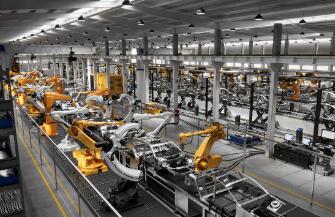
Roller bearings are widely used in a variety of industrial machinery.
They improve reliability, reduce maintenance costs and increase efficiency by providing smooth operation and reducing friction between moving parts.
Roller bearings can be found in conveyors, motors, pumps, and other rotating equipment.
Additionally, roller bearings play an important role in balancing the load on axles or shafts to prevent misalignment or damage to the machine.
The use of roller bearings also helps extend the life of machines as they help absorb shock and vibration from operating loads.
With their robust construction and reliable performance, roller bearings are ideal for many industrial applications where longevity is desired.
In conclusion, roller bearings offer numerous advantages over traditional bearing types due to their ability to handle higher loads with greater precision and reliability.
They are, therefore, an ideal choice for industrial machinery applications where reliable operation and long-term performance are desired.
-
Medical

The medical industry highly values precision and accuracy, making roller bearings an ideal choice for various applications.
Roller bearings offer extremely low-friction operation, as well as improved life expectancy when used in the correct conditions.
This means that they can be used to ensure precise and accurate movements of delicate components within a variety of medical devices.
In addition, roller bearings are particularly suitable for use in high-load applications such as wheelchairs and hospital beds.
High load capacity is important to prevent breakdowns or premature failure which could cause serious harm in a medical setting.
Furthermore, because these components are exposed to extreme temperatures and varying levels of moisture during use, bearings with excellent corrosion resistance must be employed.
As such, many roller bearings are available with a range of protective coatings to ensure maximum performance and longevity in these conditions.
-
Marine

Roller bearings are used in various industries, including the marine industry.
Marine applications of roller bearings often require special considerations due to the unique environment.
These special considerations include corrosion resistance, shock and vibration tolerance, as well as water and oil compatibility.
Roller bearings in marine applications must also be able to withstand extreme temperatures ranging from hot to cold.
To ensure that these requirements are met, it is important to select a bearing that is designed for use under these conditions.
Additionally, proper installation and maintenance of the bearing will help extend its service life and ensure optimal performance throughout its lifetime.
By using properly designed roller bearings in marine environments, businesses can reduce downtime while ensuring the safety and reliable operation of their equipment.
-
Power generation

Roller bearings are increasingly being used in power generation applications due to their ability to support large radial and axial loads, as well as handle heavy shock loads.
Roller bearings can also hold up under high temperatures and provide superior lubrication performance, reducing maintenance costs.
Additionally, roller bearings reduce noise levels and enhance the overall efficiency of the system.
Due to these benefits, roller bearings have become a popular choice for use in power generation applications such as turbines, pumps, compressors, motors, and generators.
These types of applications require robust roller-bearing components that can withstand extreme thermal environments while delivering reliable performance over long periods.
Furthermore, they must be able to effectively transmit torque between moving parts with minimal friction and wear.
Conclusion
In conclusion, roller bearings are an incredibly versatile and reliable component used in a wide variety of applications.
From consumer products like skateboards to industrial machinery and rolling stock, roller bearings provide smooth operation with low friction as well as increased longevity of the components they support.
The use of roller bearings has been integral to the development of modern industry and continues to provide a stable platform for future developments.
With advances in manufacturing technology, we can expect roller-bearing components to become even more reliable and efficient in the future.
Thanks to their durability and strength, roller bearings will remain an important part of everyday life for years to come.
By investing in quality materials and proper installation techniques, users can ensure that their applications are running at optimal levels, even in the most challenging of environments.





